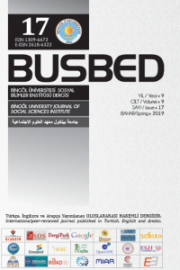YAPISAL KIRILMALAR ALTINDA SATIN ALMA GÜCÜ PARİTESİ HİPOTEZİNİN GEÇERLİLİĞİ: AVRASYA ÜLKELERİ ÖRNEĞİ
THE VALIDITY OF THE PURCHASING POWER PARITY HYPOTHESIS UNDER STRUCTURAL BREAKS: THE CASE OF EURASIAN COUNTRIES
Author(s): Mehmet SongurSubject(s): National Economy, Economic policy, Evaluation research
Published by: Bingöl Üniversitesi Sosyal Bilimler Enstitüsü
Keywords: Purchasing Power Parity; Eurasian Countries; Panel Data Analysis;
Summary/Abstract: The aim of this study to examine the validity of the Purchasing Power Parity hypothesis for Eurasian Countries using panel data analysis methods. In this Study, the validity of the Purchasing Power Parity hypothesis has been investigated both within the absolute and relative Purchasing Power Parity theory. The absolute purchasing power parity hypothesis refers to the distribution of the real exchange rate around a fixed average. However, the relative purchasing power parity is valid when there is a long-term relationship between the nominal exchange rate and the relative prices. In this framework, the study used monthly data covering the period 2002-2017 for the 10 Eurasian countries (Armenia, Azerbaijan, Belarus, Georgia, Kazakhstan, Kyrgyz Republic, Moldova, Russian Federation, Ukraine and Turkey). In this context, panel unit root and panel cointegration tests taking into account cross-section dependency and structural breaks were used in the study. Findings show that both absolute and relative Purchasing Power Parity hypotheses are valid in the countries studied.
Journal: Bingöl Üniversitesi Sosyal Bilimler Enstitüsü Dergisi (BUSBED)
- Issue Year: 9/2019
- Issue No: 17
- Page Range: 567-585
- Page Count: 19
- Language: Turkish

